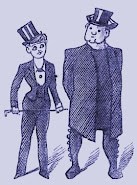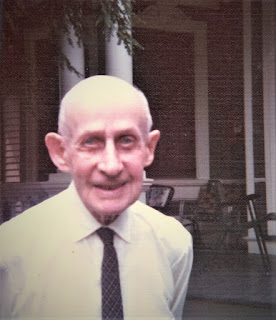[I have been away from Yesterday's Papers for a few weeks. I apologize. If you are reading this, archived, some time in the future, this note will make no difference. But in real time -- I have had a book deadline (my 76th, possibly the most demanding), and have 30'd it, ready to return to "normal" activities. Yesterday's Papers and the revival of nemo Magazine are chief among my priorities.]

Charles M Schulz’s characters are the most recognizable figures in the world, excepting perhaps Mickey Mouse, Taylor Swift, and Donald Trump. Not a new image of the Peanuts gang has been drawn for 25 years, however, but like the Sphinx or the Book of Kells, nothing should change.
It is tempting to praise the strip in terms of longevity, numbers of client newspapers and book sales, and merchandising data. Those are relevant measures, but in truth, the Peanuts phenomenon is best judged by saturation. Snoopy went to the moon, but more dispositive is the fact that he was part of everyone’s DNA on earth. We all had favorite gags, favorite characters, favorite permutations.
In my case, when I sat down to conduct a major-length interview with Schulz for my old magazine nemo (soon to be re-launched!) and despite having worked for and with him for years, I began by saying that my pet beagle when I was a kid was named Snoopy. All he said was, “Thank you.” But that was it. Was a young comic-strip fan (or any kid adopting a beagle) going to name the dog Fido? Ruff? Faron??
Another subtle "Schulz Effect": When I was in the fourth grade, a friend's father took a bunch of kids to the Hayden Planetarium in New York City as his son's birthday treat. When the simulation of the vast night sky appeared overhead, I turned to my friend's dad and said, "This make me feel insignificant." The next day I heard him tell my mom, "That was kind of sophisticated for a 10-year-old." Sophistication had nothing to do with it. Whether I had actually read the line in a Peanuts strip, I didn't and don't remember... but I thought at the time, "This is something that Linus would say." Peanuts fever.
And it was his preferred name, if not title. When he sent me inscribed books or called me out of the blue to reminisce about vintage strips, it was “Sparky.” I never asked, “Sparky who?”
I’ll address another name Sparky avoided. The phrases I used above – like “the Peanuts gang,” or “the Peanuts crew” – he hated. He hated Peanuts as the name of his creation. He submitted samples of Li’l Folks to his syndicate, United Feature, and was thrilled to make a sale; so he went along with the alternate title they imposed.
I was comics editor at United in the 1970s and learned from the Production Manager Bill Anderson that it was he who suggested the name. The entire staff was invited to name the new strip, and on the round-robin sheet Bill nominated Peanuts, inspired by the “Peanut Gallery” of young kids on the set of the TV show Howdy Doody. When I mentioned that to Sparky, he was surprised and it made him no fonder of the title he considered abstract and undignified.
Speaking of abstract and undignified, I don’t mind telling a story on myself. I was editing comics for only a few weeks when a Peanuts Sunday came across my desk. Charlie Brown’s punchline, after correcting Lucy on the baseball field before she actually recorded an out, was “I can’t even criticize good.” Well. I thought I would save him receiving letters from 10,000 English teachers, and had the art department re-letter, “I can’t even criticize well.”
Sparky received his proof sheets in the mail, went ballistic in his mild-manner context, and called virtually everyone at the syndicate from the president on down. Until he got to me. I will first say that at that moment, Sparky had been working without a contract for seven months, holding out for more control of merchandising and such, and matters were tense around the office: “Don’t call Sparky!” “Don’t bother Sparky!” So, although I had thought I should… I didn’t "bother Sparky."
When the phone was handed to me, he asked, “Do you think I got where I am because I don’t know how to write a gag?” It sounds vain, but Sparky was always modest; the logic of the situation was, um, persuasive. I emanated comic-strip beads of sweat; I squeaked out, maybe like Woodstock’s hashtag dialog, “N-no, sir.”
I could have lost that job before hardly starting, but my mentor Sid Goldberg went to bat for me. This was back in the day before quality faxes and e-files and the Internet. The syndicate incurred the expense of re-lettering the strip, burning printing plates and mattes, and sending these out – overnight – to 2000 newspapers. Good grief! You might imagine that I never, in subsequent years and close contact, asked Sparky if he remembered that incident… or that I was the over-ambitious editor.
The first fan letters I wrote when I was a kid were to Hal Foster (who replied with a terrific letter); Walt Kelly, who sent a signed Pogo daily original; and Mr Charles M Schulz, who also sent an inscribed daily strip. As a pre-eminent Peanuts fan, I eventually, and once, owned more than 70 dailies and Sundays; and many signed books and memorabilia.
I served, as noted, as his editor at United Feature Syndicate; we worked on projects together; he was the only living cartoonist, of 16, I profiled in my Abbeville Press book America's Great Comic Strip Artists; he contributed to one of my books on Little Nemo. I travelled to Paris to be with him when he received the Order of Arts from the French Ministry of Culture. (Here, Sparky with the medal around his neck.)

The major-length interview with Sparky was a cover story in the last issue of nemo. It was pirated and made into a book by an Italian publisher, and has appeared in other forms, other venues, subsequently. It was indicative of Sparky’s personality that day in Santa Rosa before the interview in his studio, when Gary Groth and I started with coffee at the snack counter of the skating rink on his property (the Minnesota boy loved hockey), Sparky got the coffee and pastries from the counter. Halfway to the table, he turned and said to the barista, “Um, put this on my tab.” Yes, owner of the place and half of his Zip code, likely richer and more famous than the next 10 cartoonists, and he reassures the clerk he is not copping free coffee…
When he sat down, Sparky displayed an aspect that shy or introverted people often do. He said, “I love nemo and read every issue. Why are you only requesting an interview now, after 30-some-odd issues?” This was not ego; he was a little hurt. Gary saved the day: “Rick was like Charlie Brown and the red-haired girl. Maybe he was afraid to ask!” Well, I was not afraid; we were friends. But sometimes we assume celebrities are too busy for this or that. In fact most celebrities thrive on this-and-that; and might feel more isolated than… mere mortals.
In his young days this congenitally reticent Charles Schulz was an evangelist of sorts, sharing his Christian faith on street corners. He drew cartoons for Christian magazines for years (for the denomination at whose church I worship). Before my interview, he asked me not to venture into matters of faith, and I agreed. But he did so on his own, on and (especially) off-mike. On his studio's bookshelves he had many Bibles and Concordances.
It always thrilled me when he called my home, out of the blue, to discuss favorite cartoonists of his childhood, or strip characters' names he forgot... or anything else related to comics. (Including his opinions on contemporary cartoonists and strips... which I will never share.) He also showed me a shelf that had my books and magazines and said he was proud of them. Aaaaargh, our tape had run out by then!
Two full years -- I thought enough time -- before Peanuts' 50th anniversary, I wrote to Sparky, inquiring about the possibility of working on a book. Well, it had already been arranged, he wrote back; and "It's too bad because I know you and I could have done something really good." Another Aaaaargh.

Peanuts, however, will not soon leave the houses of our memories – fond recollections, conversations, even attitudes toward life and wisecracks about the heavenlies.
There will never be a Good Bye. Hardly even a Good Grief, except when we need that sort of security blanket.
+++
1951 35 papers
1952 41 papers
1953 57 papers
1954 72 papers
1955 90 papers
1956 140 papers
1957 222 papers
1958 264 papers…




























